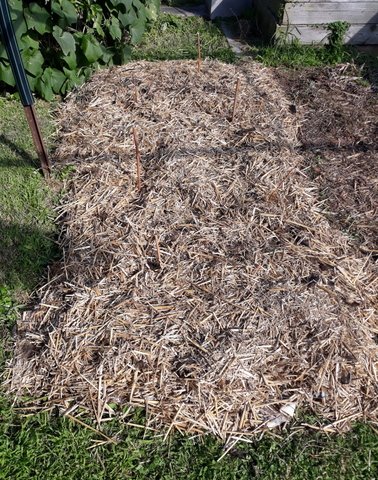Before committing to your weed control strategies, it is worth keeping in mind the following points and considerations –
1. Be knowledgeable (see part 1), it important to distinguish between annual and perennial weeds because weed control practices will, for the most part, be more effective on annual weeds. Perennial weeds will require more effort.
2. Be safe – when hand pulling weeds work within your physical limits (ie don’t bust a gut!). Also, when treating weeds wear PPE (Personal protective equipment) which is appropriate to the task eg, hat and sunscreen when out in the sun, gloves when pulling irritating weeds, using a heat gun or boiling water (to prevent burns or scalds) or when using chemical controls (to prevent skin irritation). Likewise, wearing eye protection from the sun, heat or chemicals (even vinegar can do bad things to your eyes) is very important.

3. Be timely – generally speaking, weed control activities will be more effective if applied early on in the season when weeds are young and small.
4. Being Timely is still important – if you miss weeds when they are young and small, at least make sure you control them effectively before they set seed, thus the old proverb – ‘one year’s seeding equals seven years weeding’.

Once weeds are gone, cover the soil: use a mulch or cover crop
5. Be vigilant – keep an eye out for weeds constantly so new ones don’t get the jump on you. This can be as simple as casting an eye over the veggie patch a couple of times a week.
6. Be vigilant, even after the fact - vigilance is doubly important for areas you have already cleaned of weeds. Depending on the weeds and your chosen control method, perennial weeds may come back, existing weed seeds may be stimulated to germinate or you may have missed taproots, stolons or rhizomes that can re-sprout. Don’t make the mistake of assuming the weeds in that area are sorted, keep a weather eye out!

I removed weeds from this area between the fence, greenhouse and compost bin. When I checked back after what felt like a few days (but was probably weeks) this is what greeted me!
7. Start from an Edge – Where you have a weed infestation rather than a spotty weed problem, It can be easier if you start controlling the weed patch by working from the outer edges of the infestation where the weed concentration is less in towards the centre where they are more plentiful. This approach will also prevent the weeds from spreading from the area even as you try to control them.
8. Be realistic – keep the area of weeds you are working with to a size where you can realistically achieve control. Attacking too large an area, can result in failure, disappointment and frustration causing giving up too early. As I get older I find myself tiring more quickly so I have to be careful not to bite off more than I can chew.
9. Be thorough – Do not move on from the weedy area you are concentrating on until it has been thoroughly decontaminated from weeds. Getting the area mostly free of weeds before moving on is setting up for frustration as the bits left regrow and reclaim the area.
10. Don’t let the spaces remain empty – when you have removed weeds from your beds or patches, replace them with something. Start out with mulch to cover the soil, then replant with seeds or seedlings if that is part of your plan or use a cover crop/green manure.

Dandelion has multiple uses
11. Are all weeds ‘weeds’ to you? – Do you want to eradicate all weeds or are there some you are prepared to accept or even use? We will use dandelion, mallow or sow thistle leaves in our cooking, and feed them to our chooks, so I tend to not be as rigorous with their removal as I might be with others, leaving some growing to use as we need them.
12. Be responsible – don’t let your weeds become a problem for your neighbours or local bushland, start managing them today!



